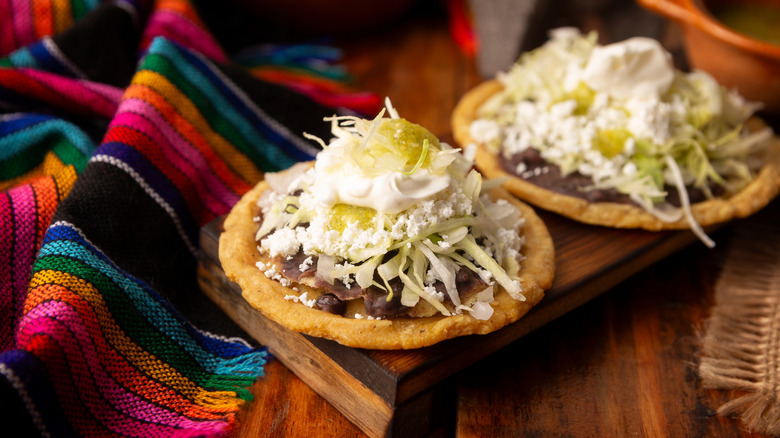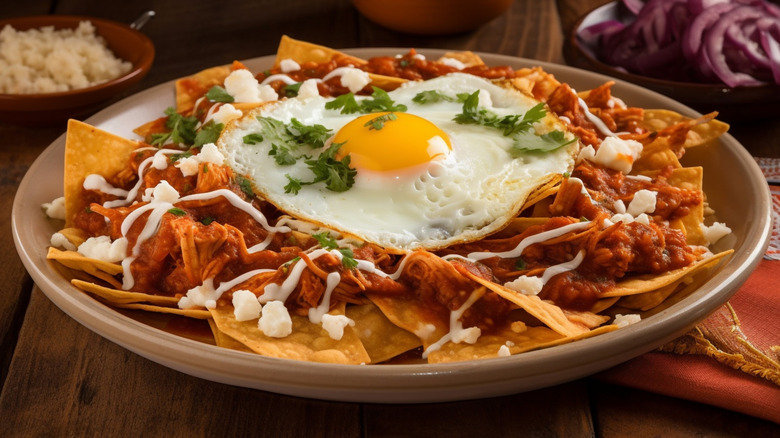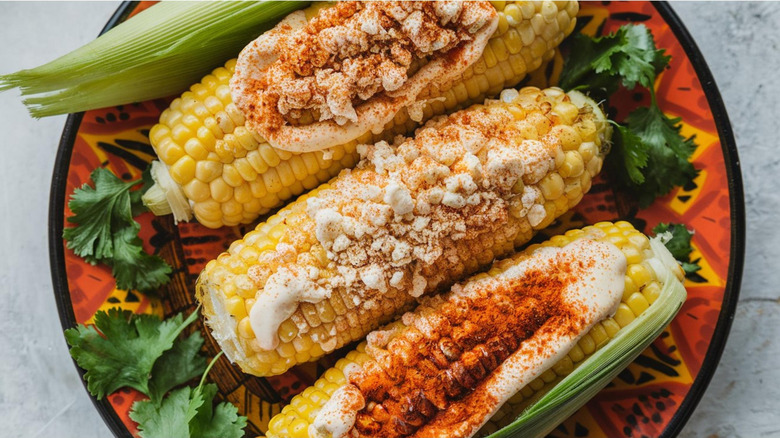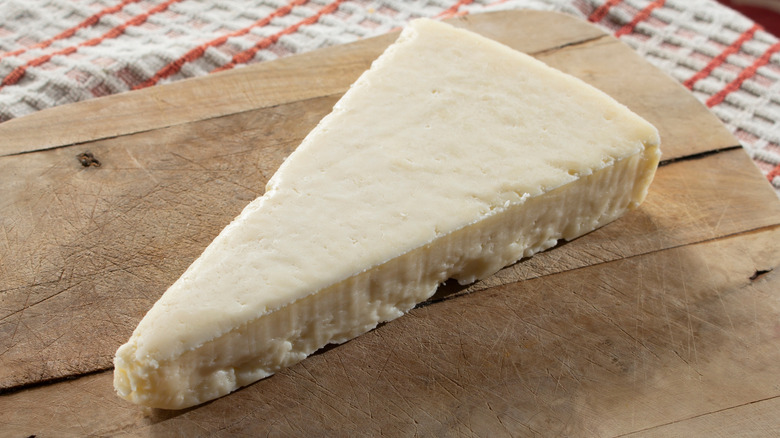Queso Fresco Vs Cotija Cheese: What's The Difference?
We may receive a commission on purchases made from links.
Even foodies can find it challenging to differentiate certain ingredients, and that goes double for cheeses. It's easy to confuse cheddar and Colby, or ponder if ricotta and cottage cheese are the same, since they can often be used interchangeably. So, it's no wonder that people get the Mexican cheeses cotija and queso fresco mixed up. Both are white cheeses crumbled over enchiladas or into taco salads, and they're often packaged similarly in the deli section. But the fact is, the two varieties are made in different ways, and serve different functions in Mexican dishes or elsewhere.
In short, queso fresco is pretty much what its translation implies: fresh cheese. It is an unaged soft cheese, like ricotta or feta, made from cow's milk or a mixture of cow's and goat's milk. It crumbles and doesn't melt well. Cotija, on the other hand, is traditionally made from cow's milk, then aged between two and 12 months. It's salty and tangy, like Parmesan. Besides comparing the two cheeses to each other, it also makes sense to compare them to cheese styles from around the world. Understanding their differences will help guide recipes and decisions on which type of cheese to use in any given dish.
Queso fresco is unaged and mild
Queso fresco is cheese crafted from fresh curds and then packaged with no or minimal aging. It's commonly found in mainstream grocery stores, as well as specialty Latin American markets. You'll often find it crumbled on top of dishes in casual Mexican and Mexican-inspired restaurants.
The soft cheese, like the version made by Cacique, is distinctive for how it crumbles, along with its mild flavor. While it is similar to feta in texture, it's not brined. But there is still a hint of tanginess and a creamy texture like ricotta salata. It's delicious in salads, or garnishing chicken adobado street tacos.
It's easy to confuse queso fresco with queso blanco and Oaxacan cheese, which are often displayed together. But there are differences. Where the curds for queso fresco are made from rennet and cheese cultures, queso blanco is made using just milk and an acid like lemon juice. Oaxacan cheese, a specialty of the state of Oaxaca, is stringy like mozzarella and grates or melts nicely. For this reason, it's better for dishes like chile relleno or pizza than queso fresco.
Ready to get creative? Give the cheese from Mexican-American founded and family-owned V&V Supremo a try. One caveat is that while most commercial queso frescos in the United States are made with pasteurized milk, more traditional versions use raw milk, which can be risky for pregnant women and others, due to the possibility of listeria contamination.
Cotija is a salty regional delicacy
If you haven't seen cotija (pronounced koh-TEE-hah) in stores, you've almost certainly had it crumbled over a dish when dining at a Mexican restaurants. At first glance it doesn't seem all that different from queso fresco, but taste them side-by-side and you'll discover the differences.
Named after the town of Cotija de la Paz in the state of Michoacán, cotija is closely associated with the food and culture of the region in the same way as Parmigiano-Reggiano is to Parma and Reggio Emilia in Italy. You'll often find it crumbled over popular local dishes like carnitas or uchepos-style tamales in place of queso fresco.
Like queso fresco, there are pasteurized and unpasteurized versions of cotija, but what you'll find in grocery stores is almost certainly pasteurized. Unlike queso fresco, it's salted and aged up to about two years, allowing the cheese to harden over time and develop a distinctive tangy flavor, like Parmesan. This make it an excellent choice to garnish dishes with strong, competing flavors, or to add some zing to a milder side dish like refried beans. It's also, arguably, the best and only choice for elote (Mexican street corn) or a tasty warm elote corn dip.
You can find cotija at most Latin American grocery stores or order a version like Karoun Queso del Valle cotija online. Note that the longer it's aged, the firmer and sharper the cheese becomes. As with cheddar or Manchego, you'll find both soft and hard versions as a result.
Using cotija in place of queso fresco
As mentioned, there is a certain amount of flexibility in using the two cheeses. Cotija will show up in place of queso fresco on dishes in Michoacan, and you'll probably find vendors or restaurants selling elote corn with queso fresco or queso blanco crumbled on top. If your store only carries one type of cheese or the other, in general, you'll be fine.
Since cotija is saltier and has a stronger flavor than queso fresco, consider using less of the former when the recipe calls for the latter. Or if you're using queso fresco in place of cotija, you may want to add a little salt. One place where queso fresco doesn't work well is in quesadillas or other dishes incorporating melted cheese. It simply doesn't melt well.
The other major difference is in shelf life. Since it's unaged, queso fresco should stay refrigerated and be eaten within a few days of opening. Well-aged cotija can be treated like any firm cheese, and should last several weeks in the fridge. However, given how tasty they both are, it's likely they'll be finished long before they go bad.



